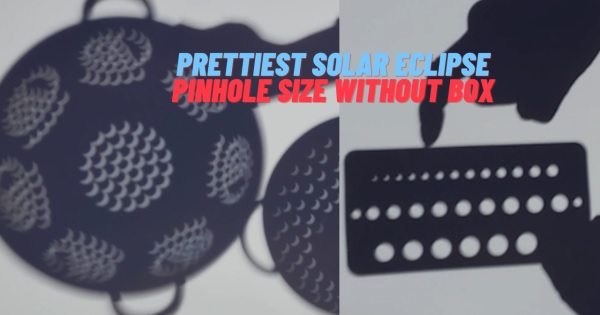https://youtu.be/BNw8dpYi-ic Today, we’re here to perfect the art of eclipse viewing without the need for a cumbersome box. If you are thinking about creating your own pinhole camera inside a dark box, remember these three crucial factors for capturing the best eclipse images:
Pinhole Size: The size of the pinhole is critical; a smaller hole delivers sharper images but reduces brightness. We’ll help you strike the perfect balance for a stunning eclipse view.
Roundness of Pinhole: Ensuring a perfectly round pinhole is essential to achieve the best results.
Pinhole Material: Opt for thin materials for the pinhole, ensuring optimal performance.
While these principles are essential for creating precise scientific instruments, our goal here is to provide you with a visually captivating representation of the eclipse. The sun’s brilliance and sharp edges allowed us to use relatively larger pinhole sizes but still capture the essence of the eclipse event.
We hope you enjoy this unique perspective on the annular solar eclipse and enjoy discovering how everyday items, like the colander, can be used in innovative ways. Don’t forget to hit the “like” button, subscribe for more cosmic adventures, and continue exploring the universe with us. Stay curious and keep your eyes on the sky for our next exciting journey!
Last Total Solar Eclipse on August 21, 2017, we were first to present that an everyday item, a colander, could double as an eclipse-viewing tool. We demonstrated this technique during the solar eclipse at that time, and you can find the YouTube link in the video description below: https://youtu.be/7flBd7hTlTs
0:0 first colander 8/21/2017
0:30 difference between Annular eclipse & Total Eclipse
0:50 Pinhole size
1:08 pinhole camera small, round, thin
1:59 colander hole diameter
2:28 eclipse max & partial eclipse
3:08 more time passed
Prettiest Way to View Solar Eclipse through Colander Pinhole Without Making Box

